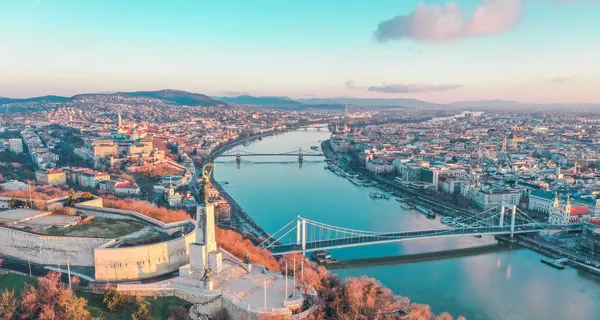Introduction to Wheelchair Accessible Budapest
The City of Budapest was formed in 1873 with the unification of the towns of Buda, Óbuda and Pest, recognized then as the co-capital of the Austro-Hungarian Empire. Today, Budapest is the capital city of Hungary and is among the European Union’s 10 largest cities by population. Bisected by the Danube River, the city is recognized as being two cities in one, with the hilly and quiet Buda to the west, and the largely flat, high-action Pest to the east of the river.
Tourists will find themselves drawn to both Buda and Pest, however most choose to stay on the Pest side of the river. Disabled visitors will find the Pest side of the city much friendlier to wheelchair and scooter use, though neither side offers a particularly high level of accessibility. In reflecting on my own trip to Budapest as a wheelchair user, it reminded me of cities like Bucharest, Romania and Prague, Czech Republic — completely manageable for wheelchair users, though certainly not as accessible as one would like. Using this guide to wheelchair accessible Budapest, you’ll learn about the city’s public transportation system, wheelchair taxis, accessible hotel rooms and more — enough information to plan your own trip to the city known as the Queen of the Danube.
Attractions & Sights – 7 Wheelchair Accessible Things to Do in Budapest, Hungary
Budapest’s top attractions can be explored in a couple of days and many are wheelchair accessible. Some historic church buildings, businesses and many restaurants lack barrier-free entry, but the majority of the most celebrated tourist sites do provide some level of access.
1. Heroes’ Square
Heroes’ Square is one of Budapest’s most iconic public squares, home to the Millennium Monument and flanked by the Museum of Fine Arts and the Budapest Hall of Art.
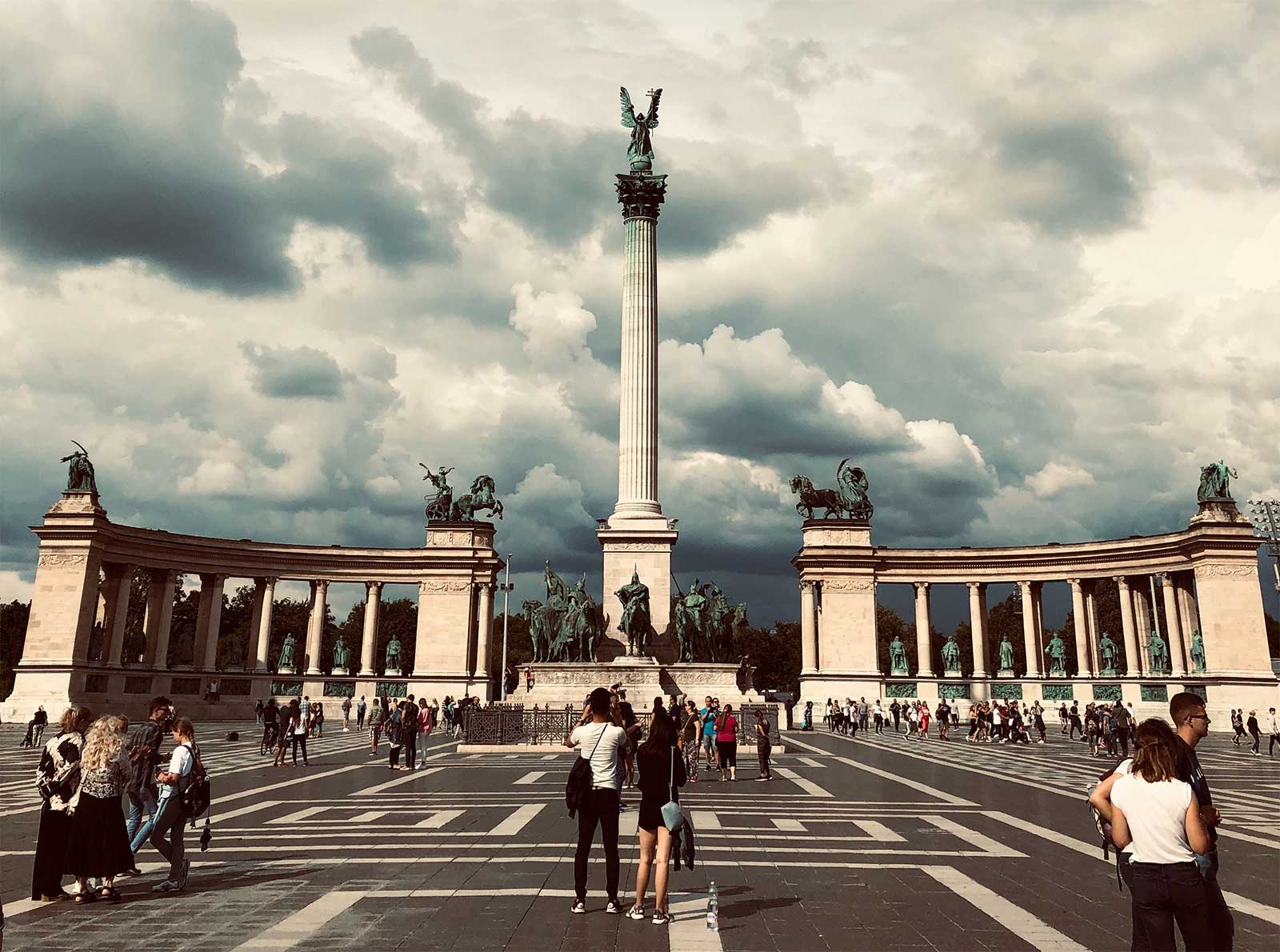
The Millennium Monument was constructed in 1896, the year the city’s first subway line opened, to honor the one thousand year anniversary of the founding of the Hungarian state. The monument features multiple statues representing important figures in Hungarian history, primarily kings. The central column is topped with a statue of the Archangel Gabriel, who holds the Hungarian Holy Crown.
The square has become an important cultural gathering place, and the square itself is wheelchair accessible. Wheelchair users should experience no difficulty in rolling over the paving stones, even though many are uneven.
(adsbygoogle = window.adsbygoogle || []).push({});
2. Buda Castle
Palace to the Hungarian kings for centuries, Buda Castle traces its history to 1265 although the majority of the present complex was constructed in the 18th century. Today, the castle is no longer a functioning royal palace, and is instead home to the Budapest Historical Museum, Hungarian National Gallery, St. Stephen’s Hall and the National Széchényi Library.
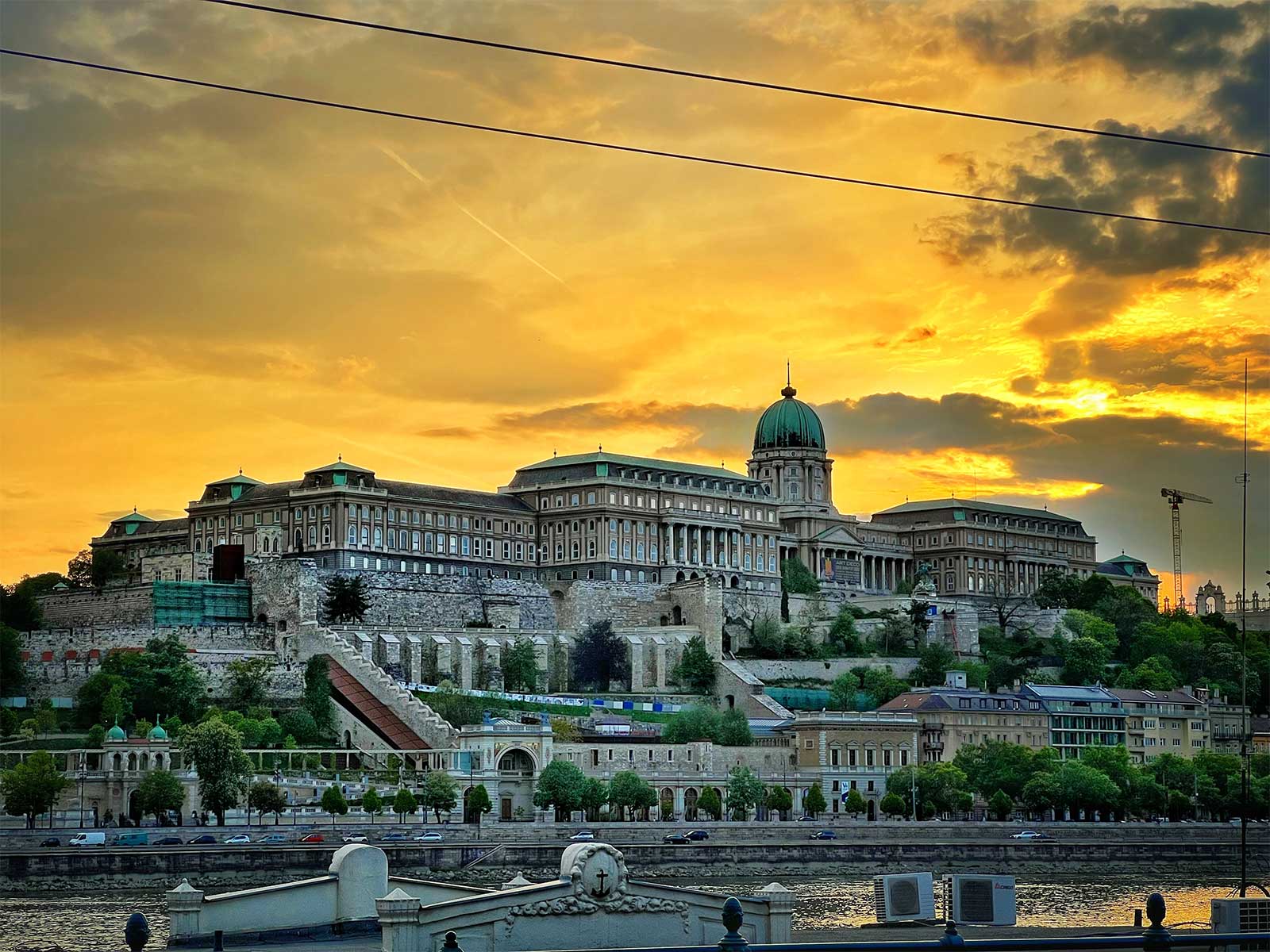
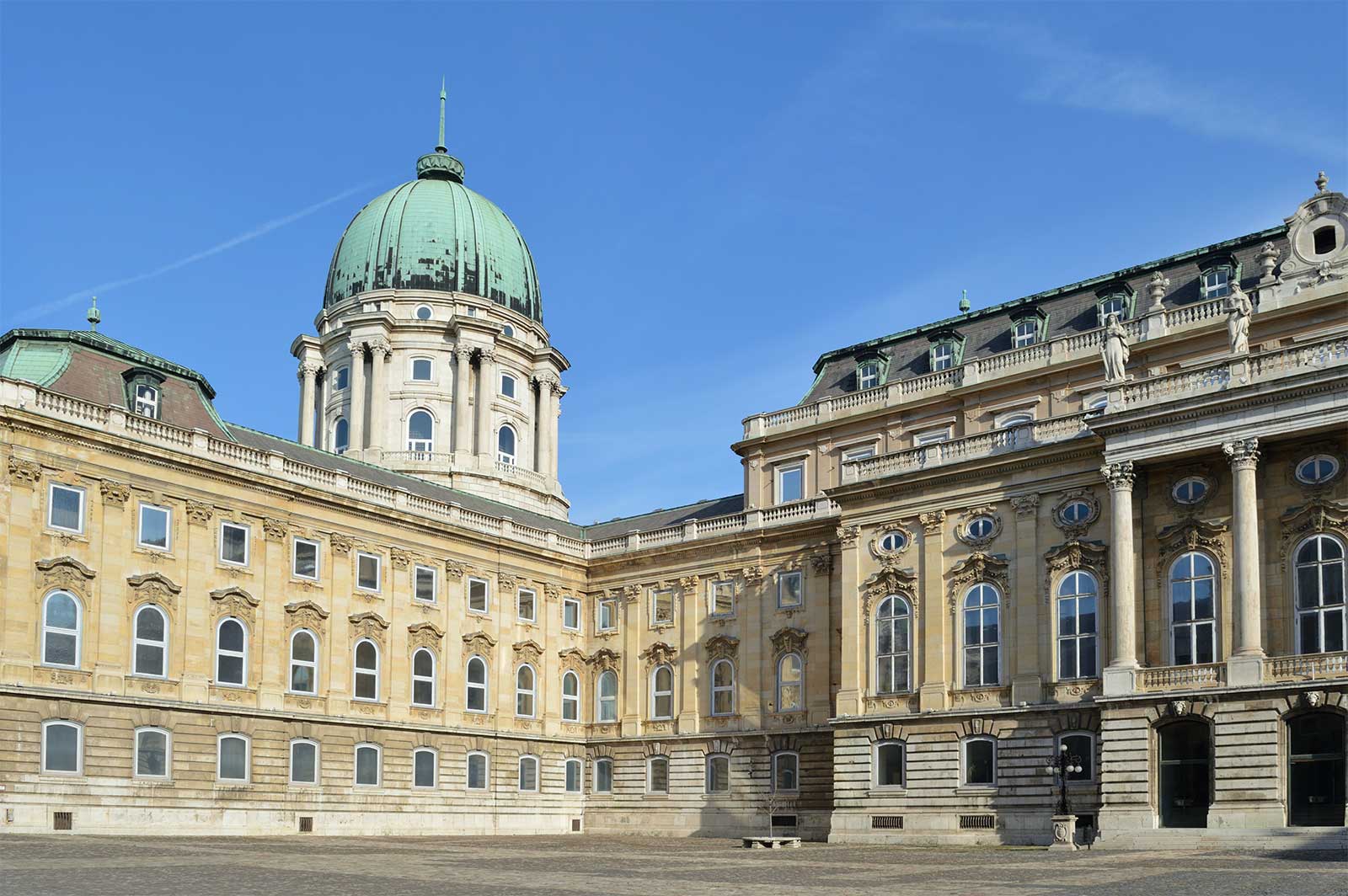
Located on the western side of the Danube River, Buda Castle is an important fixture in the section of Budapest that is recognized as a UNESCO World Heritage Site.
Information on visiting the institutions housed within the castle complex is available via their individual websites:
Much of the castle was rebuilt and restored following World War II, and the interior no longer features the royal trappings. Although you won’t experience a true palace tour at the castle, a visit is still rewarding with such a variety of exhibits and Hungarian cultural heritage on display there.
3. Matthias Church
The Church of the Assumption of the Buda Castle or “Matthias Church” is located in Holy Trinity Square at the heart of the Buda Castle District. The Gothic-style church was constructed in the 14th century, and is commonly used name honors King Matthias I, who ruled Hungary and Croatia from 1458 to 1490.
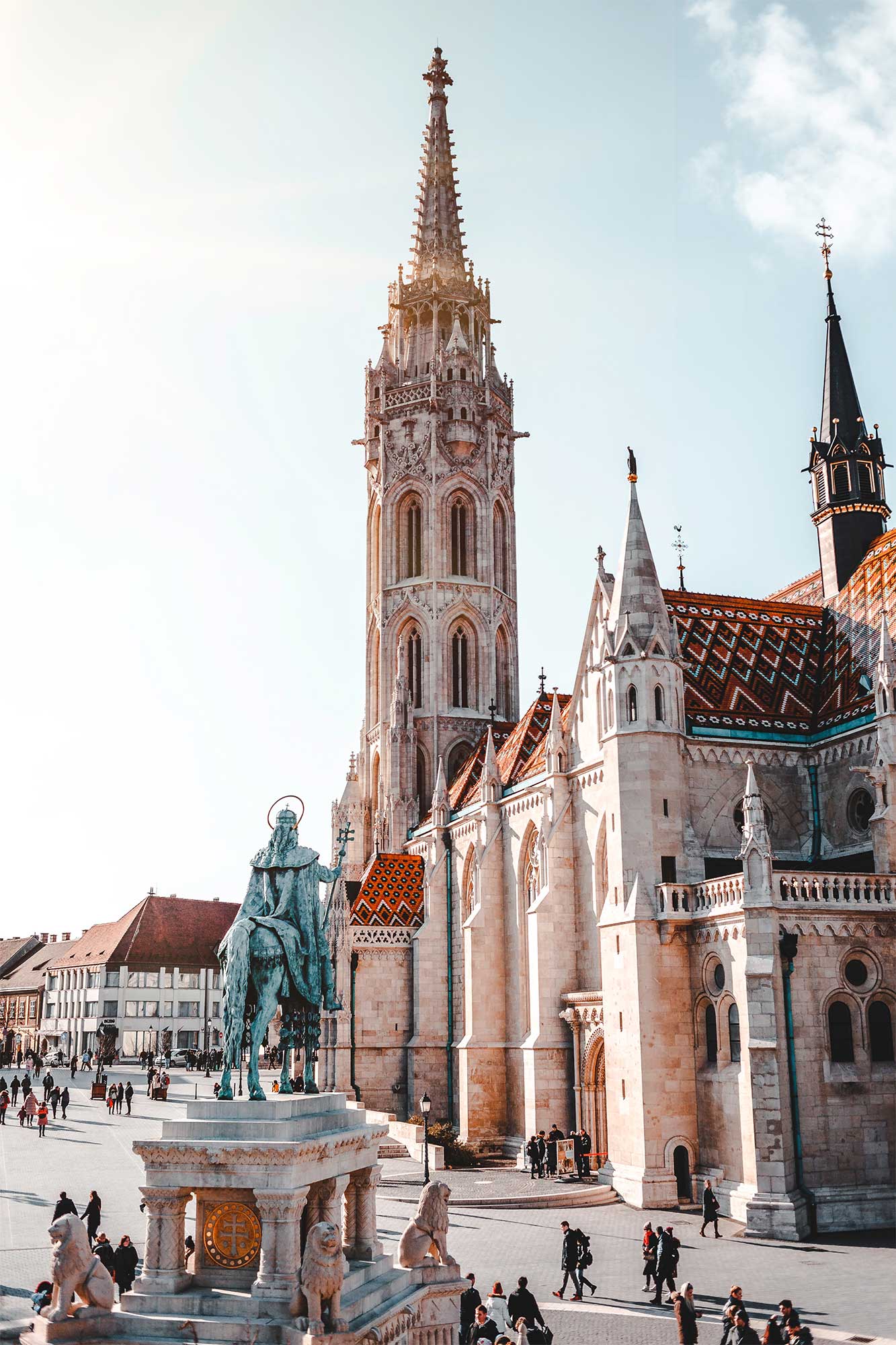

The church hosted two coronations — the first in 1848 for Franz Joseph I, Emperor of Austria and King of Hungary, and the second in 1916 for Charles IV, the last Emperor of Austria and King of Hungary, who was deposed following the end of the First World War. The church’s long history is clearly displayed in the religious artwork, altarpieces and statues on display.
Wheelchair access to the church and sanctuary is possible via a barrier-free entrance on the right side of the church. For more information, visit the Matthias Church website.
(adsbygoogle = window.adsbygoogle || []).push({});
4. Central Market Hall
Opened in 1897 and sizing up at more than 100,000 square feet, the Great Market Hall is the oldest and largest indoor market in Budapest.
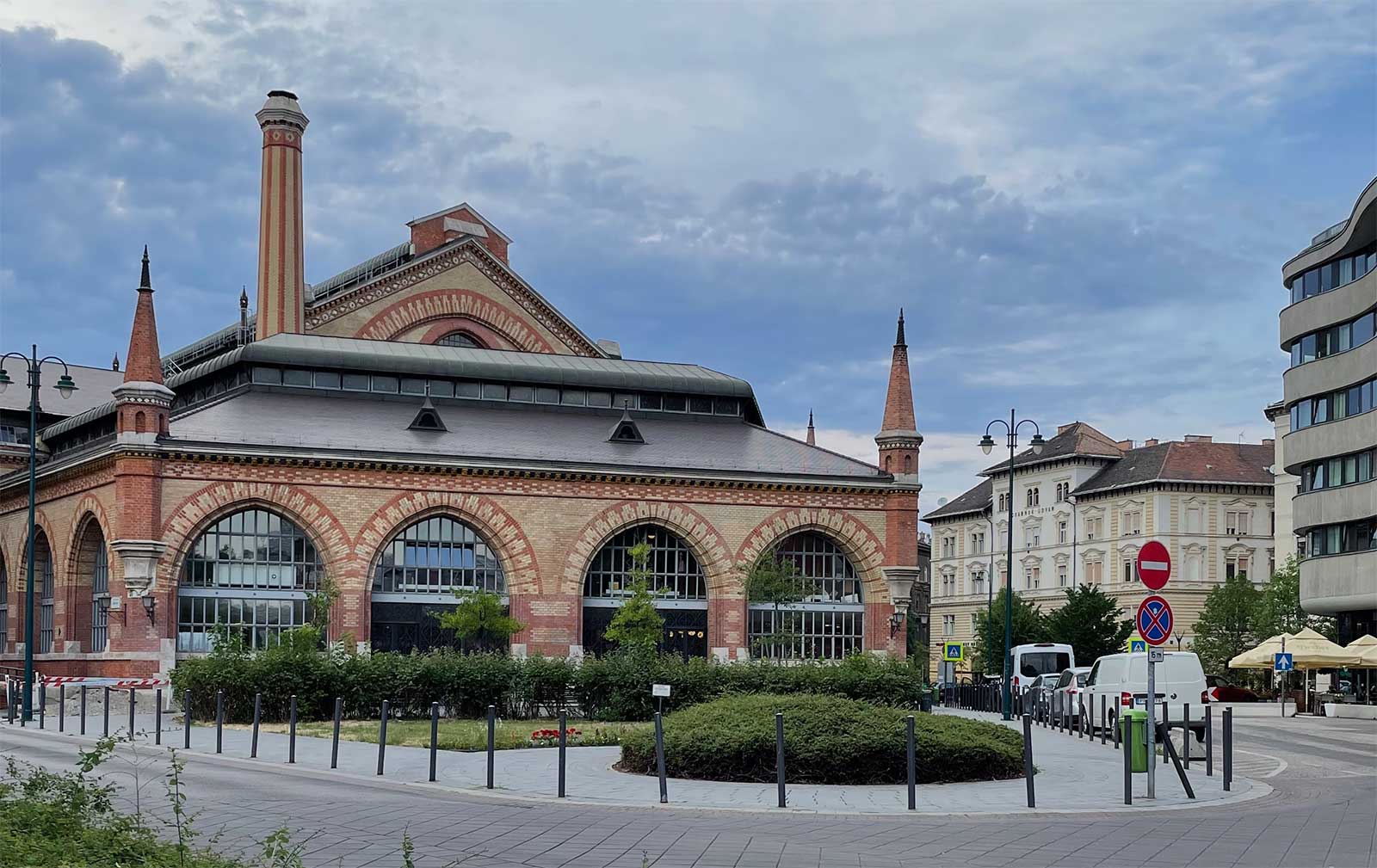
The market’s three levels offer a variety of goods, with stalls on the ground floor selling the most popular products of meat, produce, spices, wine and spirits. The basement level features fish and vegetables, while the second floor is home to restaurants/eateries and tourist souvenirs.

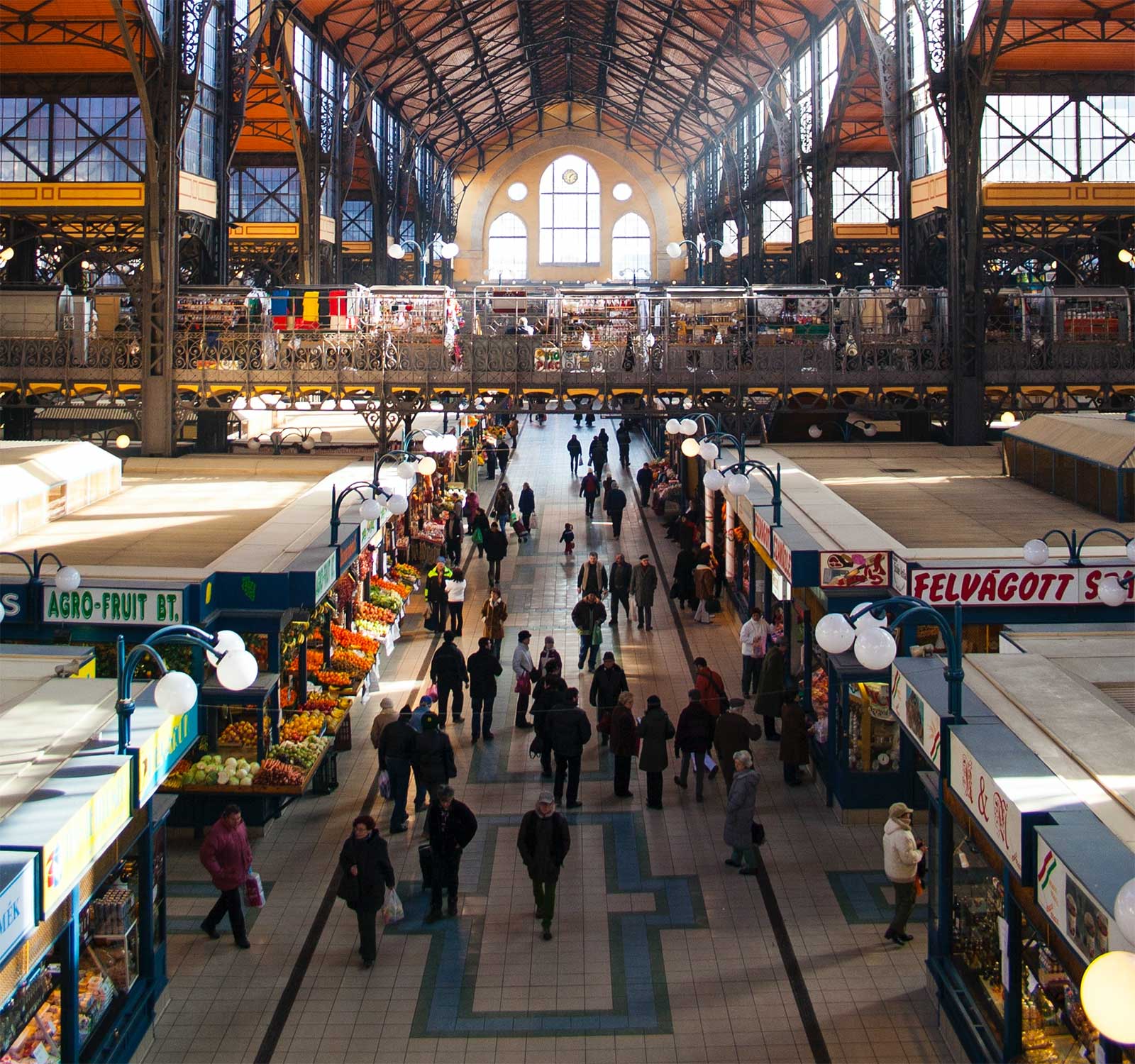
Located just two blocks from the wheelchair accessible Fővám tér metro station (M4 line), a visit to the market is convenient and should be on every tourist’s list of things to do in Budapest. There is something for everyone, from the hall’s incredible architecture to the local food vendors and the comforting buzz of a busy marketplace. Additional information can be found on the Central Market Hall website.
5. Enjoy Budapest’s Restaurants and Cuisine
I traveled to Budapest with my friend Michele — for both of us, it was our first trip to Hungary, and we quickly realized that the destination had much to offer in quality dining. Each meal that I had during the trip was fantastic, and while I didn’t stay long enough to write a true guide to restaurants, I’m excited to return for another chance to enjoy the food.
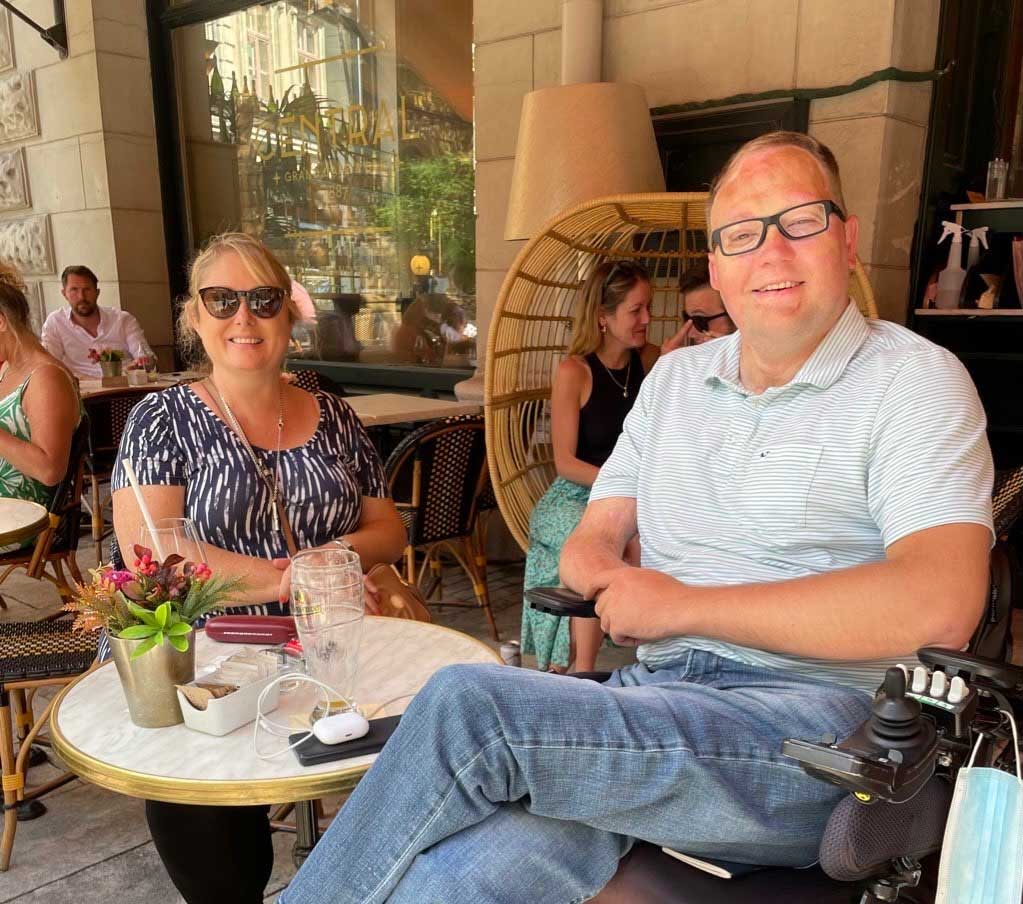
The choices seemed endless, but we went to places that had been recommended to us. Accessibility wasn’t something that was considered, and while most restaurants were not wheelchair accessible, the prevalence of outdoor dining allowed me to enjoy the restaurant’s offering even if I did not have access to a bathroom.


Two restaurants that really stood out to me on the trip were the Central Grand Cafe and Bar, an iconic lunch spot with more than a century of history, and Borbíróság Restaurant, a traditional Hungarian Bistro with innovative dishes made from fresh ingredients sourced at the Central Market Hall, located just one block away.
6. St. Stephen’s Basilica
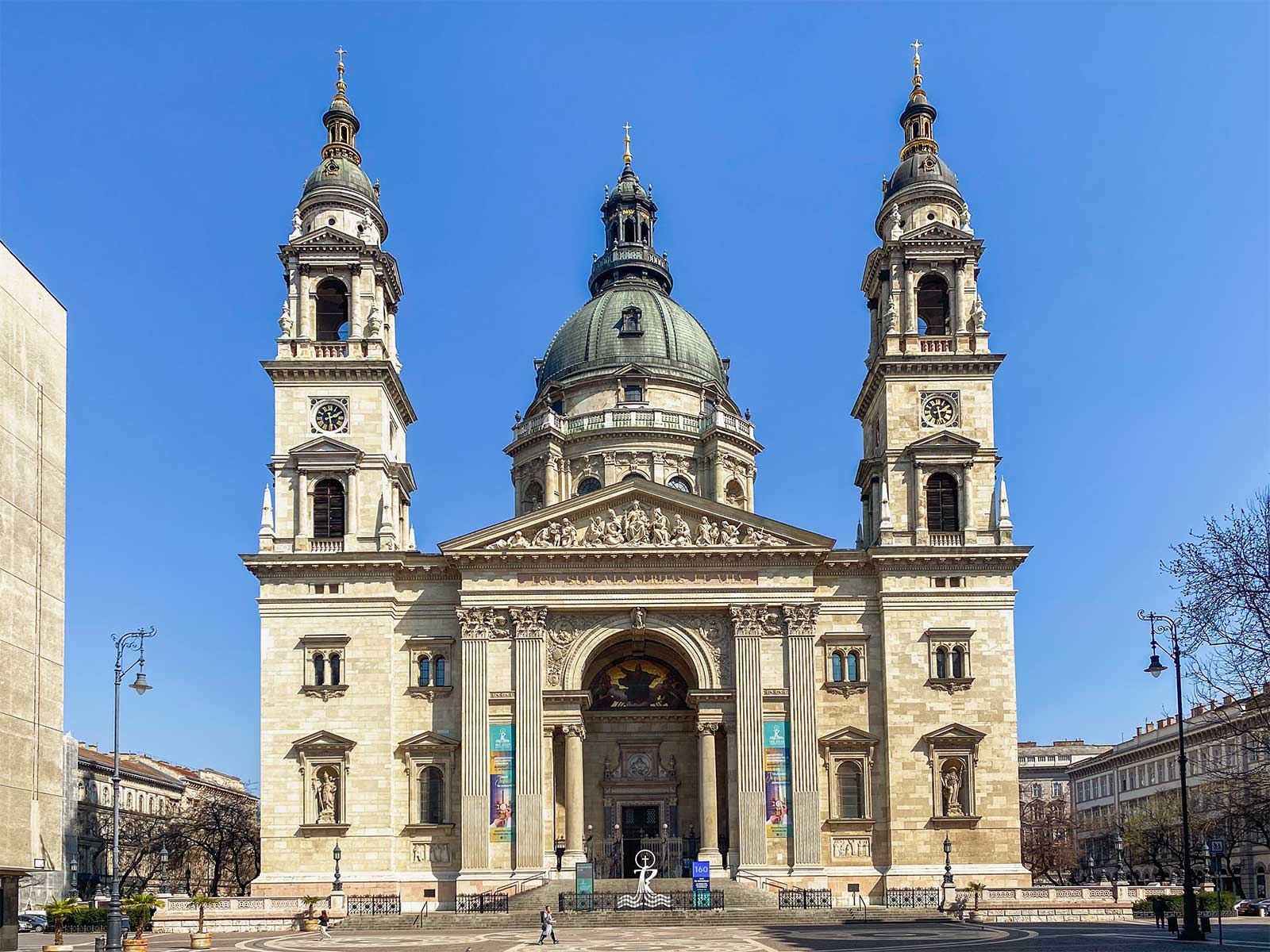
St. Stephen’s Basilica is the third largest church in Hungary and the co-cathedral of the Roman Catholic Archdiocese of Esztergom-Budapest. Completed in 1905, the neoclassical basilica is a dominant figure in the Budapest skyline, with its towering cupola and two bell towers.
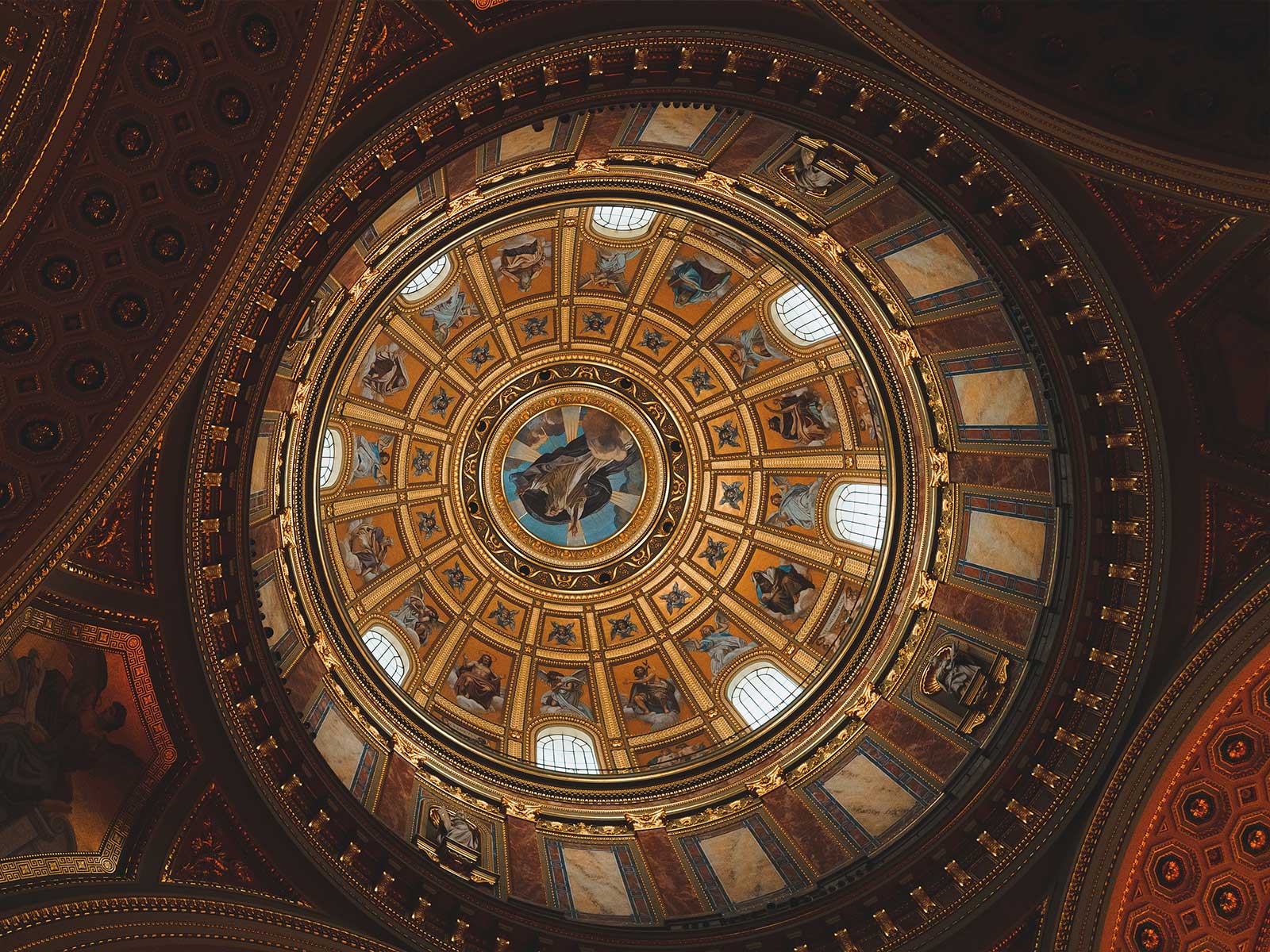
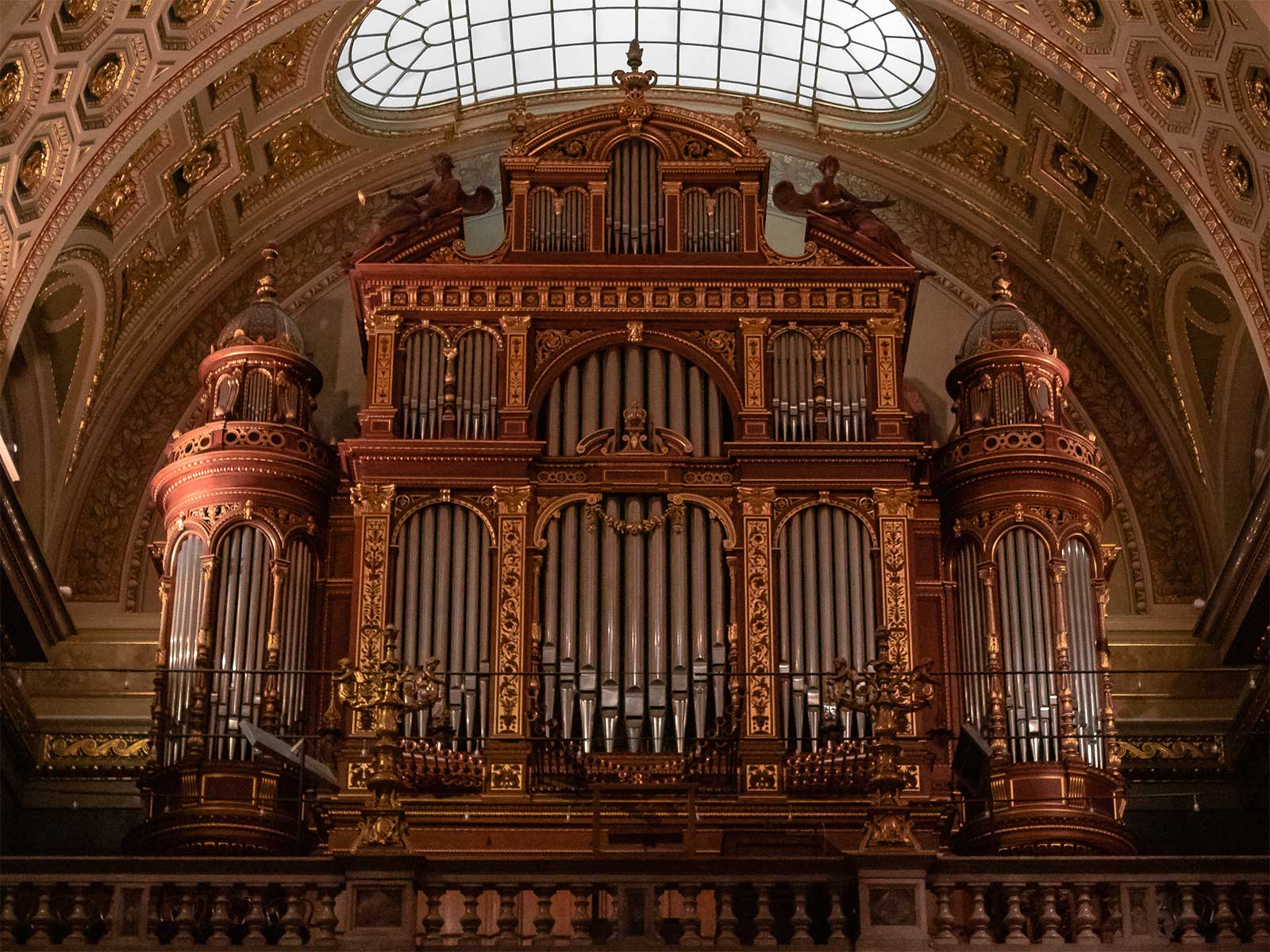
Wheelchair access to St. Stephen’s Basilica is provided via a ramp at the building’s southern end — once inside, visitors are treated to an exceptionally beautiful and ornate church interior. The painting inside the cupola bears an image representing God the Father, which struck me given how uncommon it is to see such a portrayal. Other incredible art adorns the church as well, with mosaics, bronze reliefs, altarpieces and statues created by some of Hungary’s most cherished artists and sculptors.
7. St. Anne’s Church — Downtown Budapest
St. Anne’s Church in Budapest’s city center is located on Szervita Square, a short distance from the Hard Rock Cafe. Built in the 1720s and expanded in 1874, the church is highly regarded for its baroque features. Its copper tower holds two bells, the larger of which was cast in Buda in 1674, and the smaller cast in Pest in 1757.
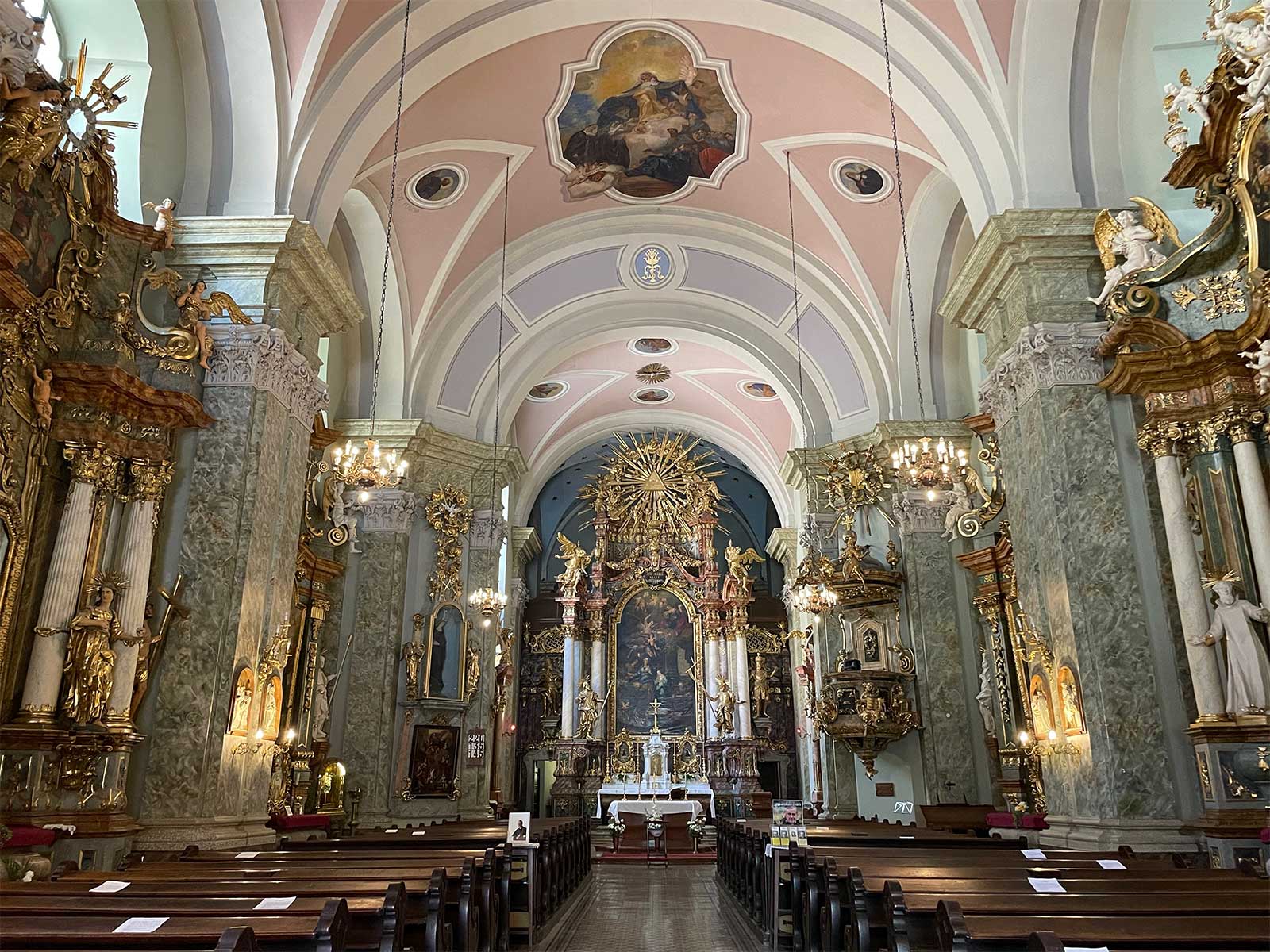
Wheelchair access to the church’s interior is possible, and its Baroque style is visually stunning. A cacophony of gilded surfaces dominate the design, while the church’s dark walls and pastel ceiling creates an interesting lighting effect.
Sidewalk Accessibility
The accessibility of sidewalks in Budapest, Hungary is, for lack of a better term, “just okay.” In my tour of the city, most of the sidewalks I encountered were manageable for my power wheelchair. Sidewalks in some districts were modern and accessible, however others were made of cobblestones that made rolling comfortably difficult.
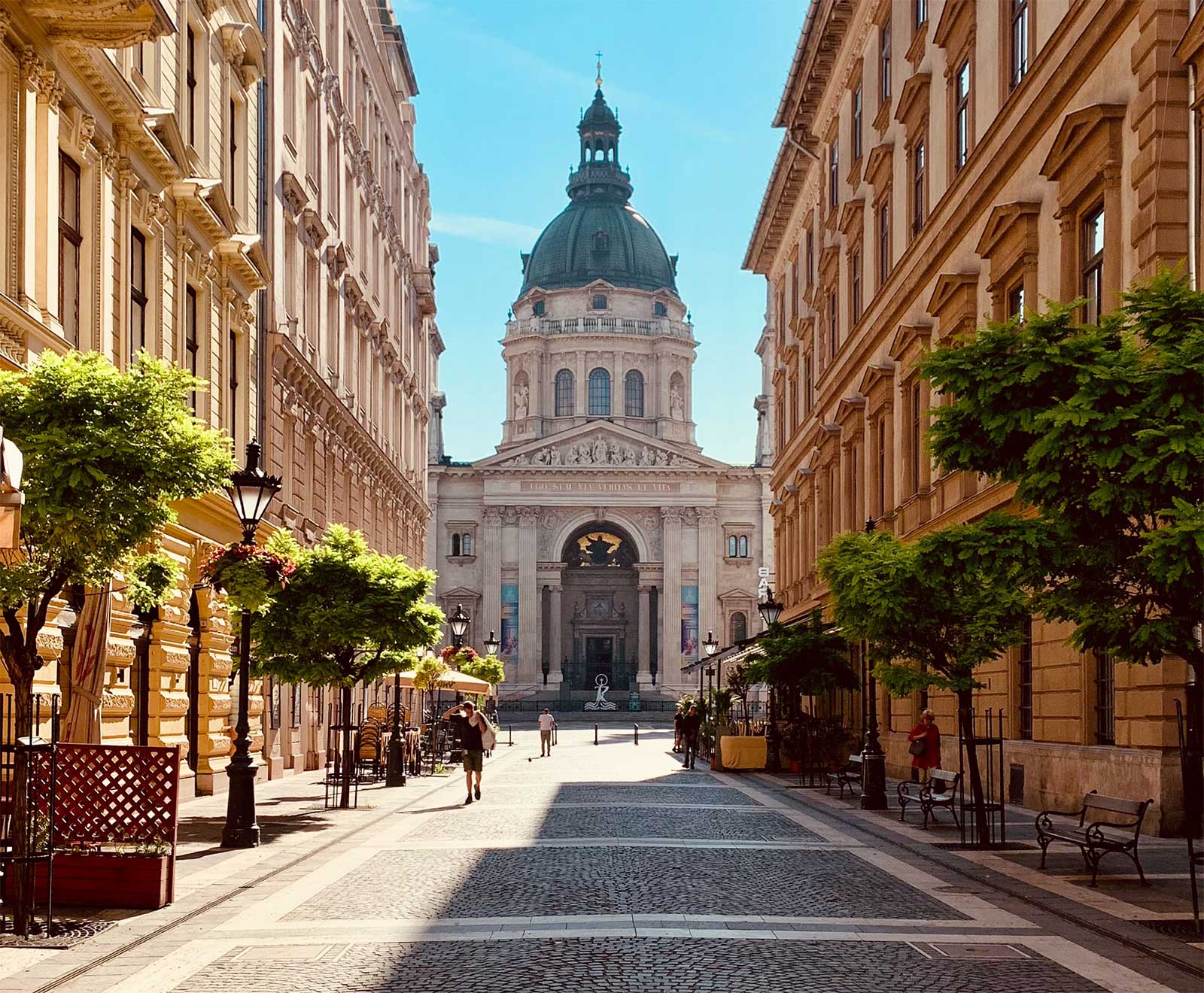
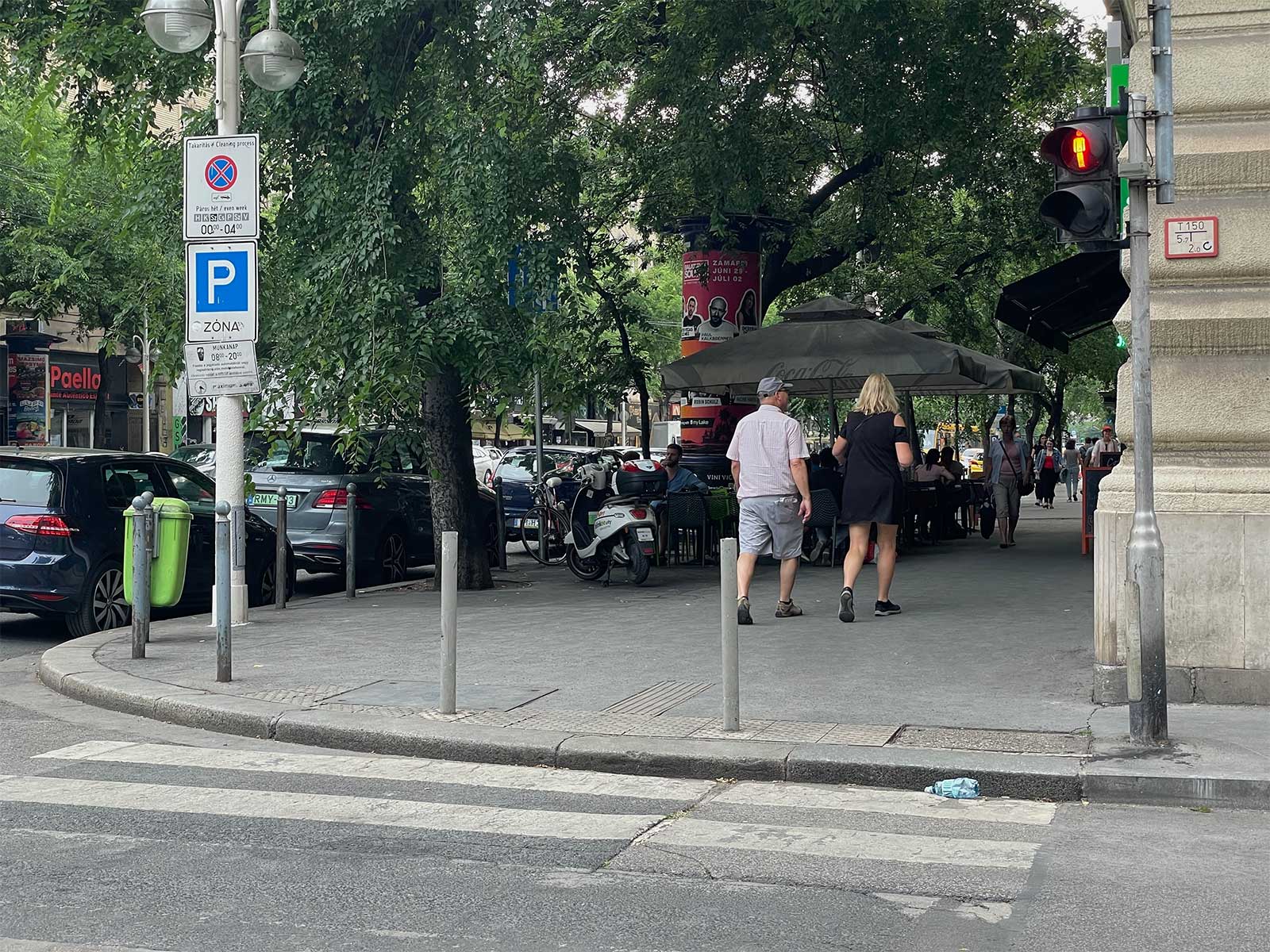
Two challenges kept popping up: elevated curbs and tram tracks.
Few crosswalks had a barrier-free ramp, with most curbs having a lip of at least one inch. Others were higher, some too high even for my power wheelchair to climb them. In these cases, I was able to locate an alternate route, but it was an inconvenience.
The expansive nature of Budapest’s on-street tram system means pedestrians will frequently encounter train tracks when crossing streets. Aging streets and track crossings can create accessibility barriers for those using wheeled mobility devices, so be sure to read my article on how to safely cross train tracks with a wheelchair. It wasn’t too big a barrier, but I definitely made sure to cross with care.
I made it around the city without much trouble, but the sidewalks in Budapest are not in a “good” or “great” state of repair. More work needs to be done to promote an accessible pedestrian environment, but for most wheelchair users, Budapest should be considered as a manageable destination — at least within those areas frequented by tourists.
(adsbygoogle = window.adsbygoogle || []).push({});
Wheelchair Accessible Public Transportation in Budapest
The public transportation system in Budapest, Hungary consists of an underground metro subway, on-street trams, city buses and trolley buses — the system is partially wheelchair accessible, however the city has made a commitment to achieve full accessibility in the future.
Wheelchair Accessibility of Budapest Metro System
The Budapest Metro opened in 1896, making it the world’s second oldest underground transportation system, and the very first to be electric-powered. Significant renovations are currently being made to improve accessibility, however the system is currently only partially accessible.
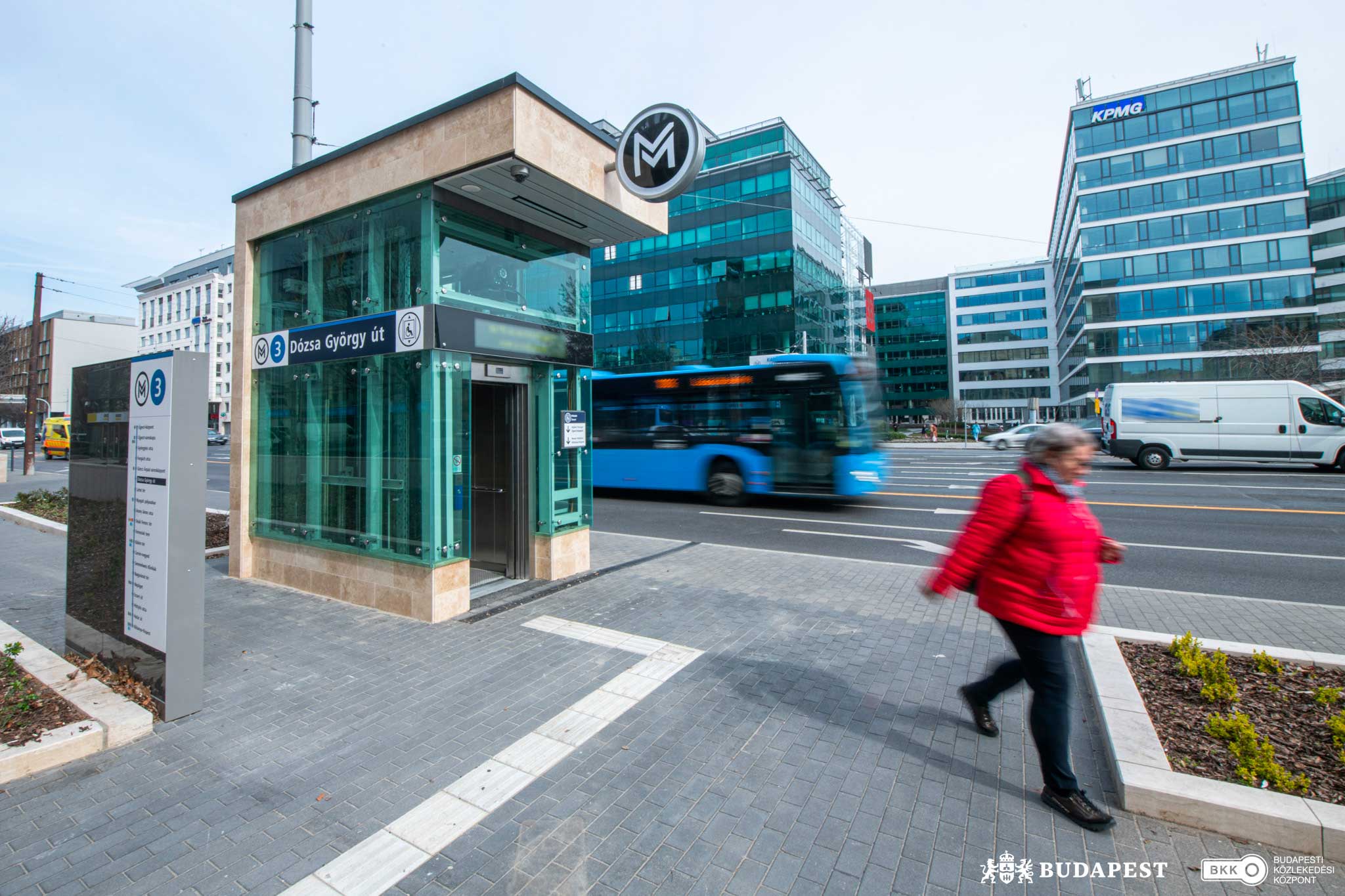
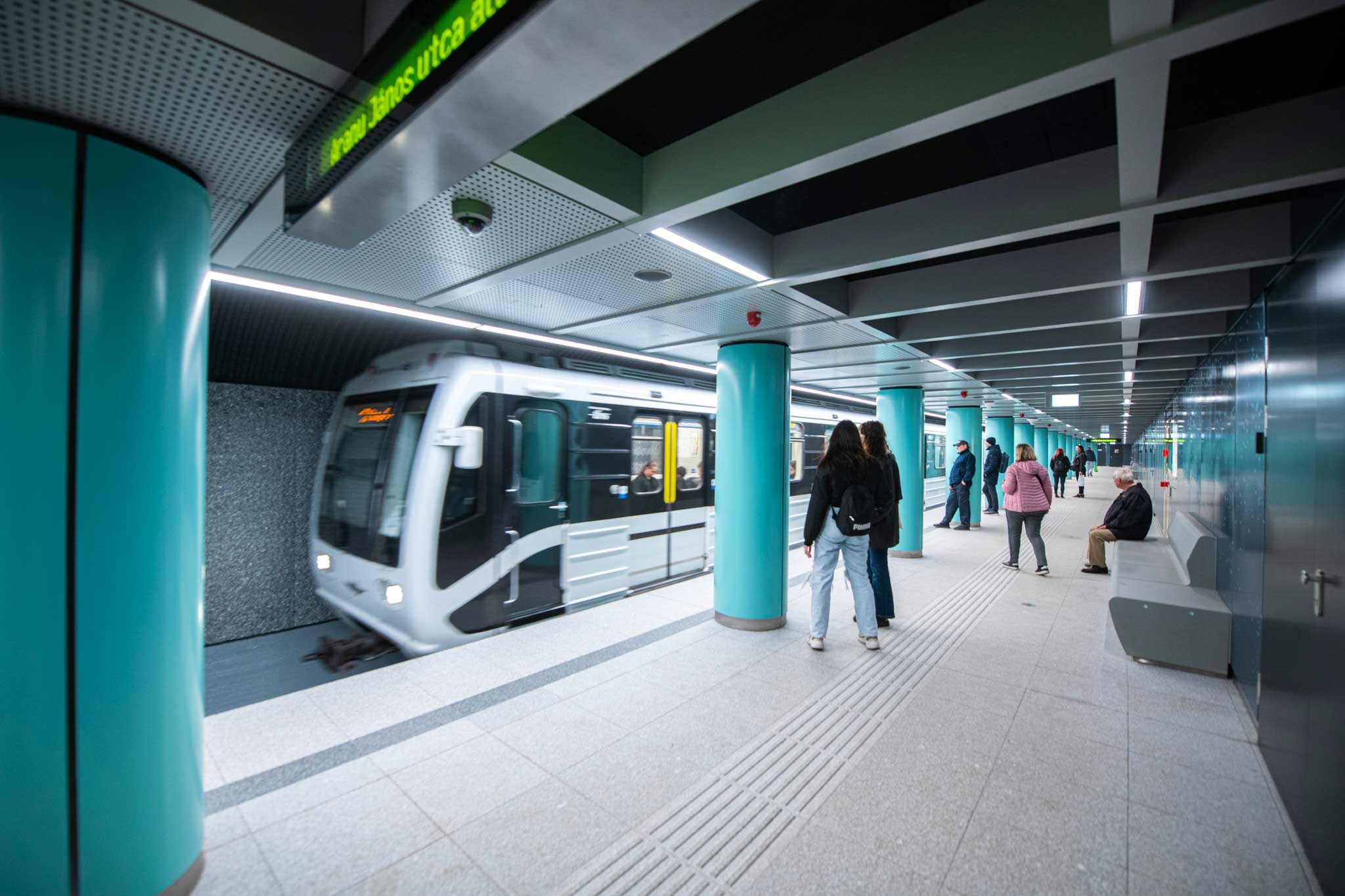
The metro system’s three lines (M2, M3, and M4) offer varying degrees of wheelchair accessibility, described here:
- Budapest Metro Line M1 — No stations are wheelchair accessible.
- Budapest Metro Line M2 — The following stations are step-free and wheelchair accessible: Örs vezér tere, Pillangó utca and Puskás Ferenc Stadion.
- Budapest Metro Line M3 — The following stations are step-free and wheelchair accessible: Újpest-központ, Újpest-városkapu, Gyöngyösi utca, and Forgách utca. The Göncz Árpád Városközpont station is partially accessible.
- Budapest Metro Line M4 — All stations are step-free and wheelchair accessible.
Subway trains feature a space designated for wheelchair users, with a wheelchair icon affixed to the train doors that provide access to those spaces.
Wheelchair Accessibility of Budapest Trams
More than 40 tram lines powered by overhead electrical wires operate throughout the City of Budapest. With some routes having service frequencies of once every two to three minutes, the tram network has one of the highest utilization rates in the world.
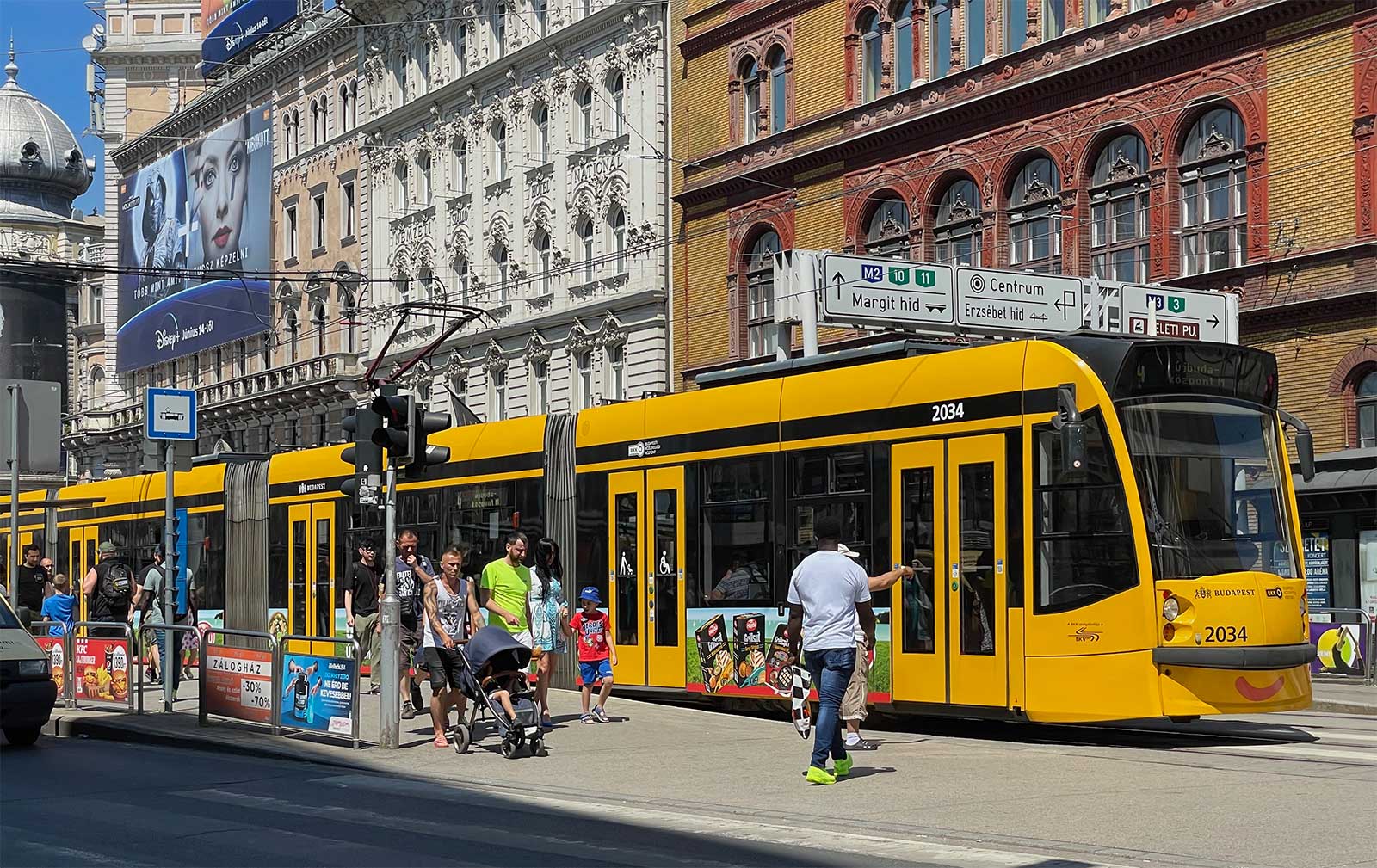
According to city transportation agency BKK, low-floor vehicles are in service along approximately 30% of the tramlines in Budapest, but even where a wheelchair accessible low-floor tram is in service, not all stops are barrier-free. The stops on tram lines 1, 3, 4 and 6 are barrier-free, with the exception of the Boráros tér stop on line 6. Each low-floor tram vehicle has a designated space for wheelchair users.
Wheelchair Accessibility of Budapest City Buses
All city buses currently operating in the Hungarian capital city are now low-floor and wheelchair accessible. Trolley buses are less accessible, with many high-floor vehicles still in circulation, however all lines are served by some low-floor vehicles.
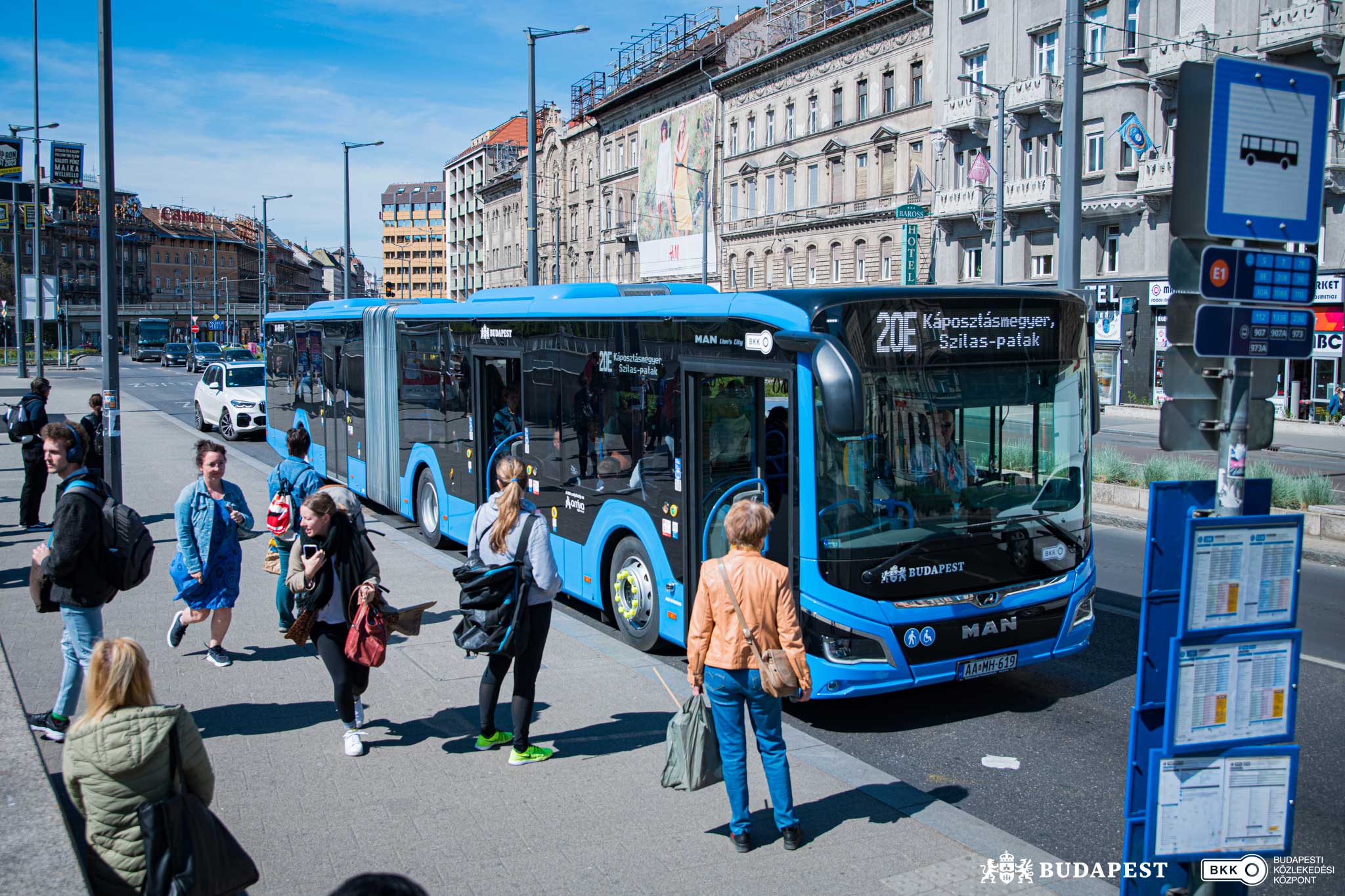
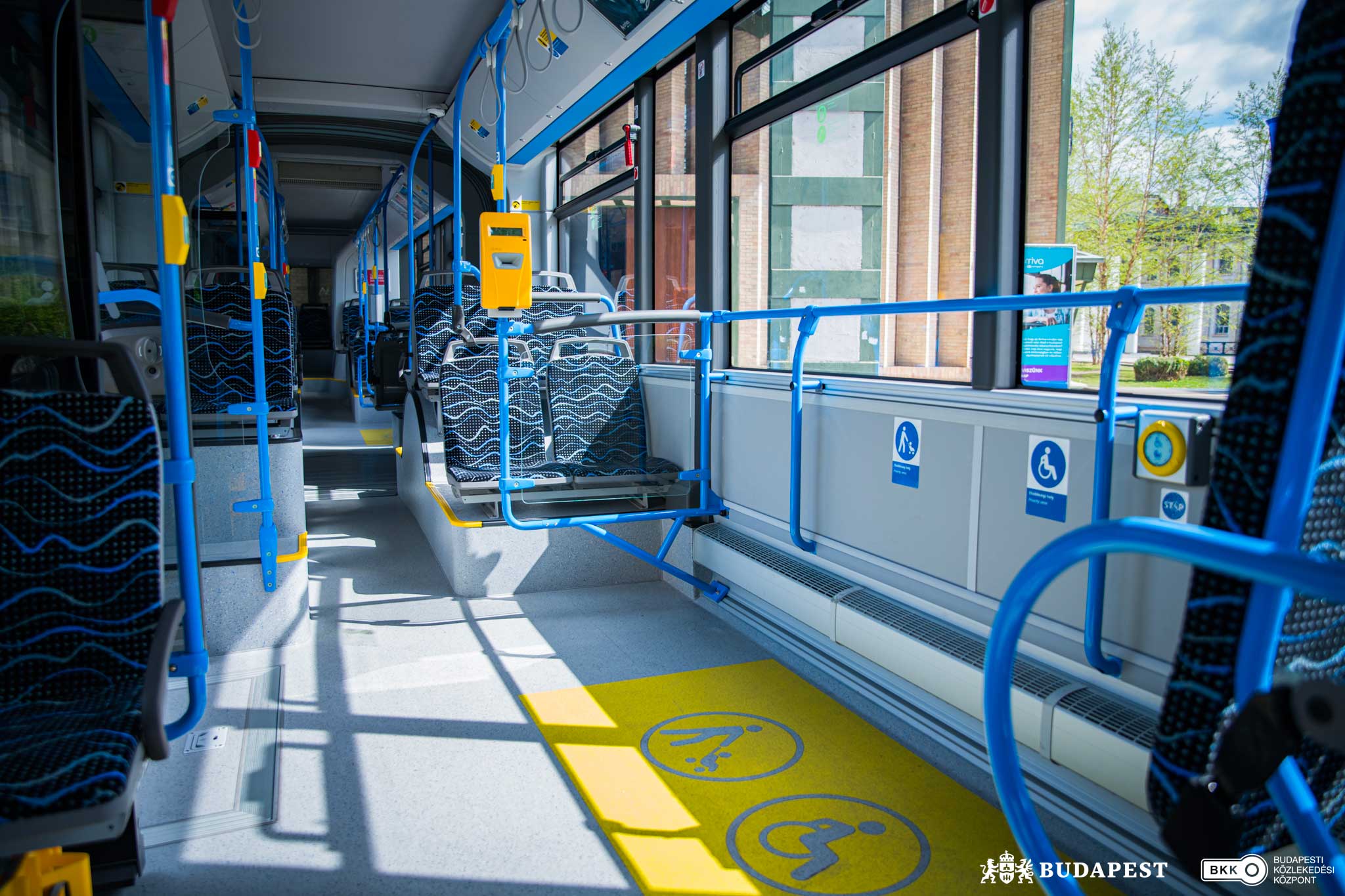
Low-floor buses and some trolley buses are accessible via a wheelchair ramp at the center or rear door. Each bus has a designated wheelchair space.
Budapest Public Transportation Fares & Passes
Public transportation fares in Budapest are extremely affordable, with single ride fares costing only a dollar. Fares and passes can be purchased from automated ticket vending machines, or through the BudapestGO app.
- Single ride fare — 350 HUF (approx. $1 USD)
- Airport Shuttle Bus one-way fare — 2,200 HUF (approx. $6 USD)
- 24-hour Budapest Travelcard pass — 2,500 HUF (approx. $7 USD)
- 72-hour Budapest Travelcard pass — 5,500 HUF (approx. $16 USD)
Additional information on tickets and passes can be found on the BKK website.
Wheelchair Accessible Taxis in Budapest
Traditional taxi cab operators in Budapest do not provide wheelchair accessible taxis, however a private operator (Paratrans) does offer an accessible transportation service.
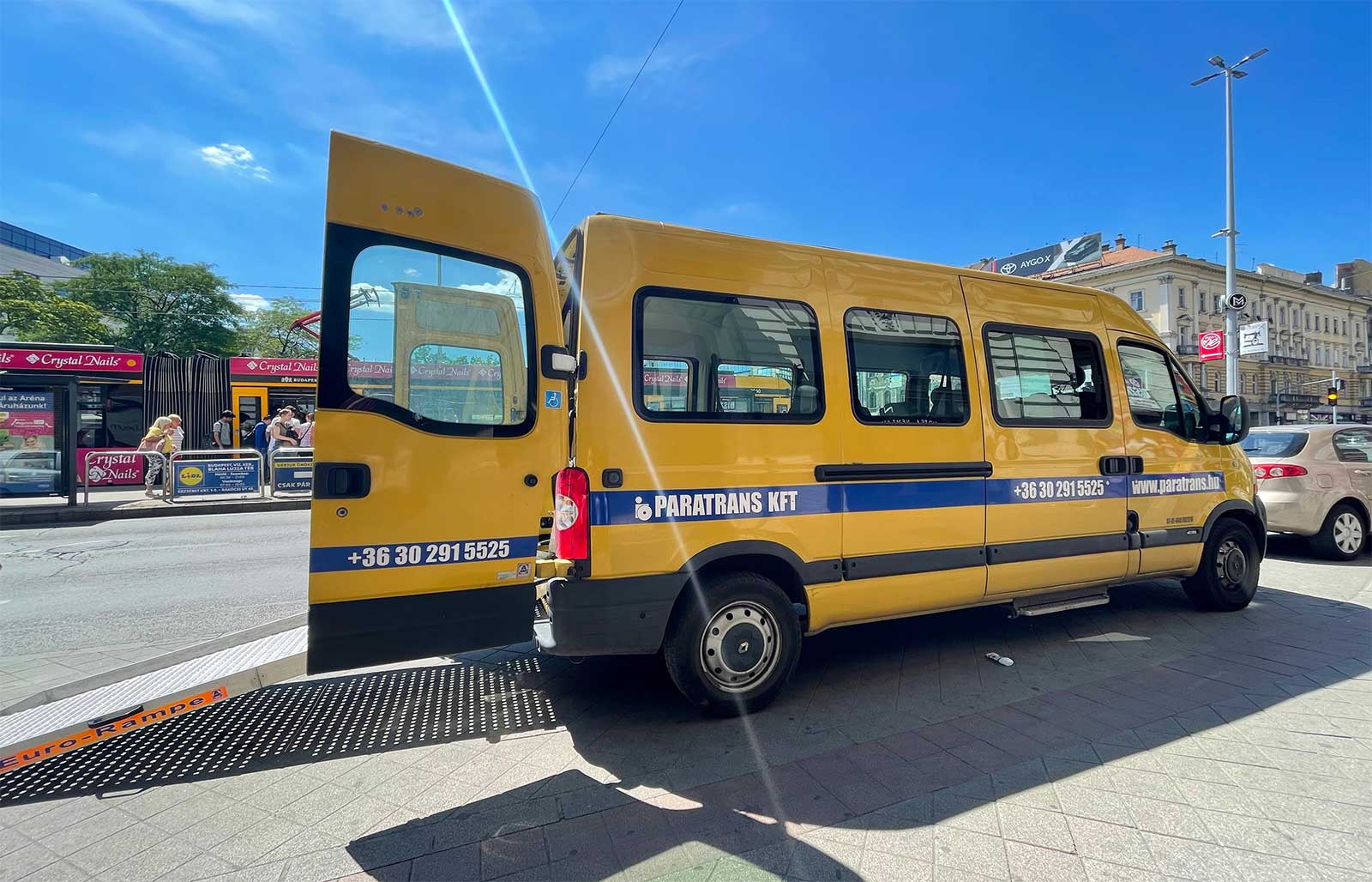
The company has a large van with a wheelchair ramp, securement straps and seatbelt. I utilized Paratrans to and from the airport, and a transfer to my hotel in the city center cost 15,000 HUF (approx. $43 USD) each way. If you’d like to schedule a ride, visit the Paratrans website or contact the company using the below information:
E-mail: info@paratrans.hu
Telephone: (+36) 30-900-1603
I scheduled my rides via email, and the company was very responsive. Although the driver did not speak English, the service was top notch.
Wheelchair Accessible Hotels in Budapest
This post contains affiliate links from some of my advertising partners. I may receive a small commission on purchases, at no additional cost to you. While you don’t have to use these links, I appreciate your support of my blog when you do. You can read my advertising disclosure here.
I have only traveled to Budapest once, spending only a few nights there — as such, I have stayed in only one hotel, the Hotel Nemzeti, which is part of Accor Hotels’ MGallery brand. I have provided photos and a review of that hotel below, as well as links to other hotels that advertise wheelchair accessible accommodation in the city.
Hotel Nemzeti Budapest – MGallery
The Hotel Nemzeti Budapest is conveniently located on the Pest side of the Danube River. A wheelchair accessible tram stop serving lines 4 and 6 is directly in front of the hotel, and a Metro station serving the accessible M4 line is only a few blocks away. The hotel offers adapted rooms with a roll-in shower and ample space to move about in a wheelchair.
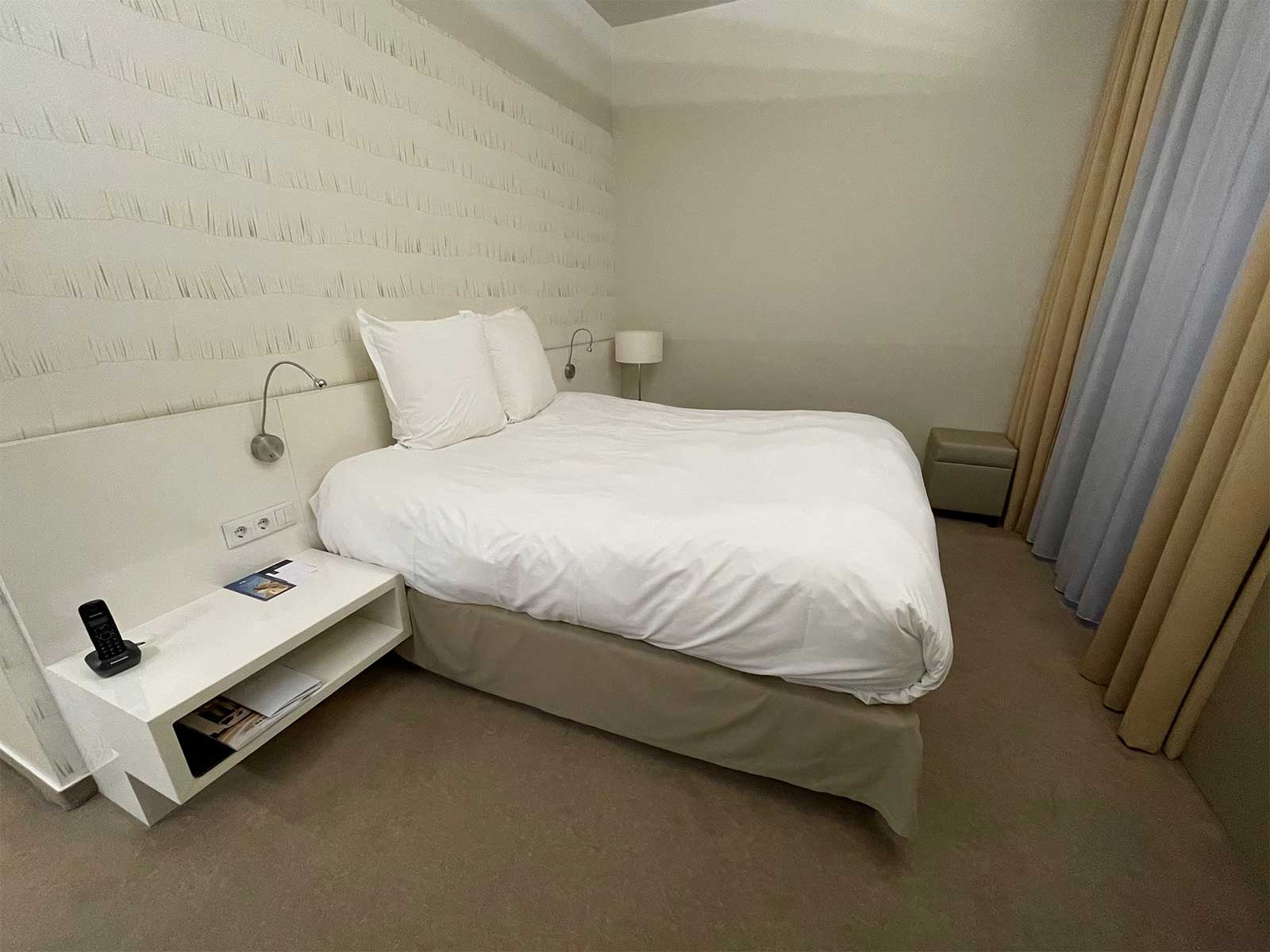
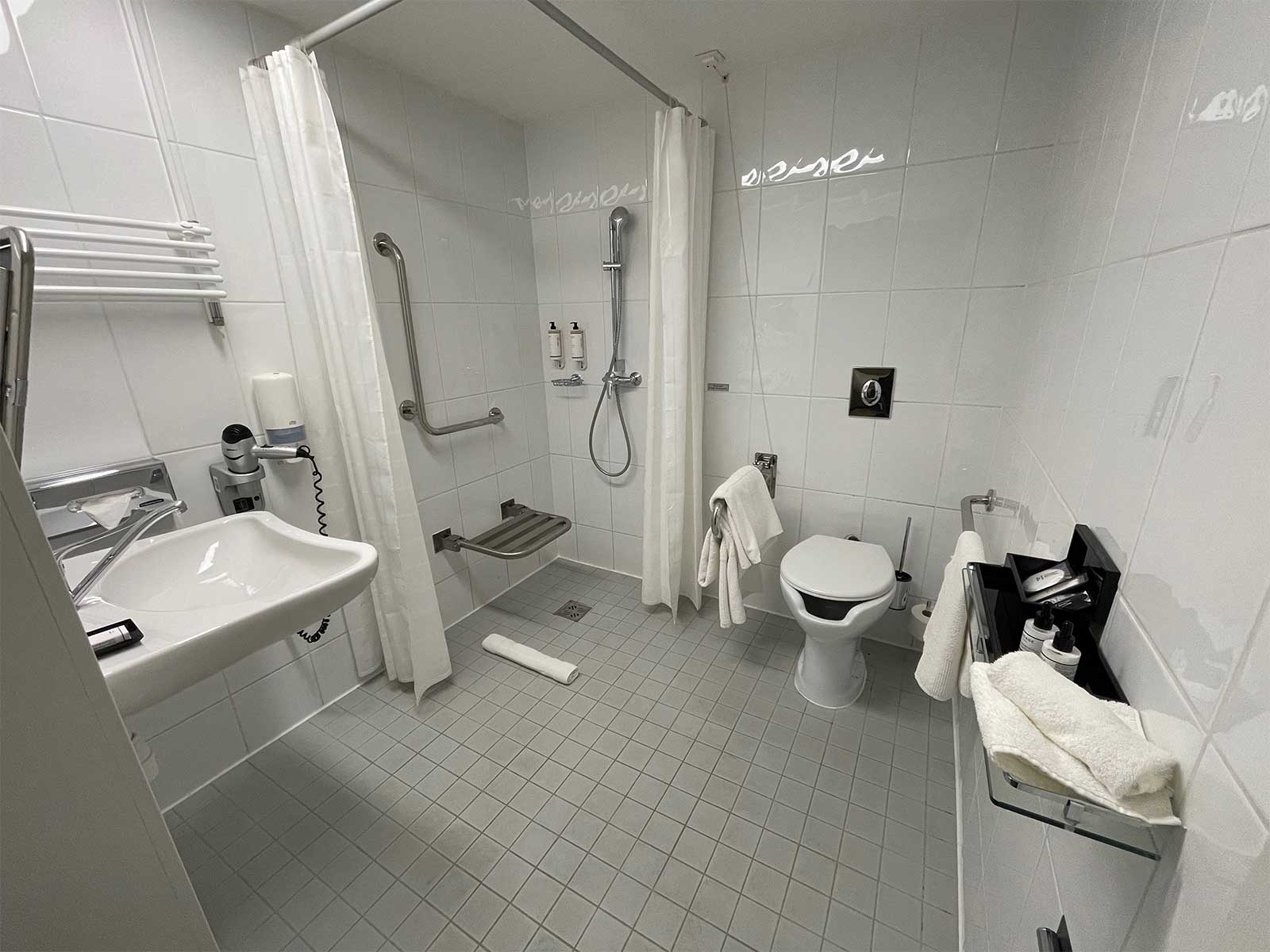
Room rates were affordable at under $100 USD per night, and my room featured a comfortable king size bed. The guest room accessibility was surprisingly good, and the bathroom had many of the accessibility features that I require, including a toilet with grab bars and a roll under sink. The roll-in shower had a wall mounted seat and a handheld showerhead. There was a grab bar behind the seat, however not on the wall adjacent to it. My stay was pleasant, and I would definitely consider a repeat stay.
To research room rates or to make a reservation at the Hotel Nemzeti, visit the Accor Hotels website.
Additional wheelchair accessible hotels in Budapest to consider
The following hotels advertise wheelchair accessible guest rooms in Budapest, Hungary, offer convenient access to the city’s attractions, and are worth considering for your stay. Be sure to verify that the hotel will be able to meet your specific accessibility needs.
- Budapest Marriott Hotel — Located on the Pest side of the river, the hotel advertises accessible rooms with roll-in showers and sits right on the banks of the Danube with incredible views of the Buda Castle and more.
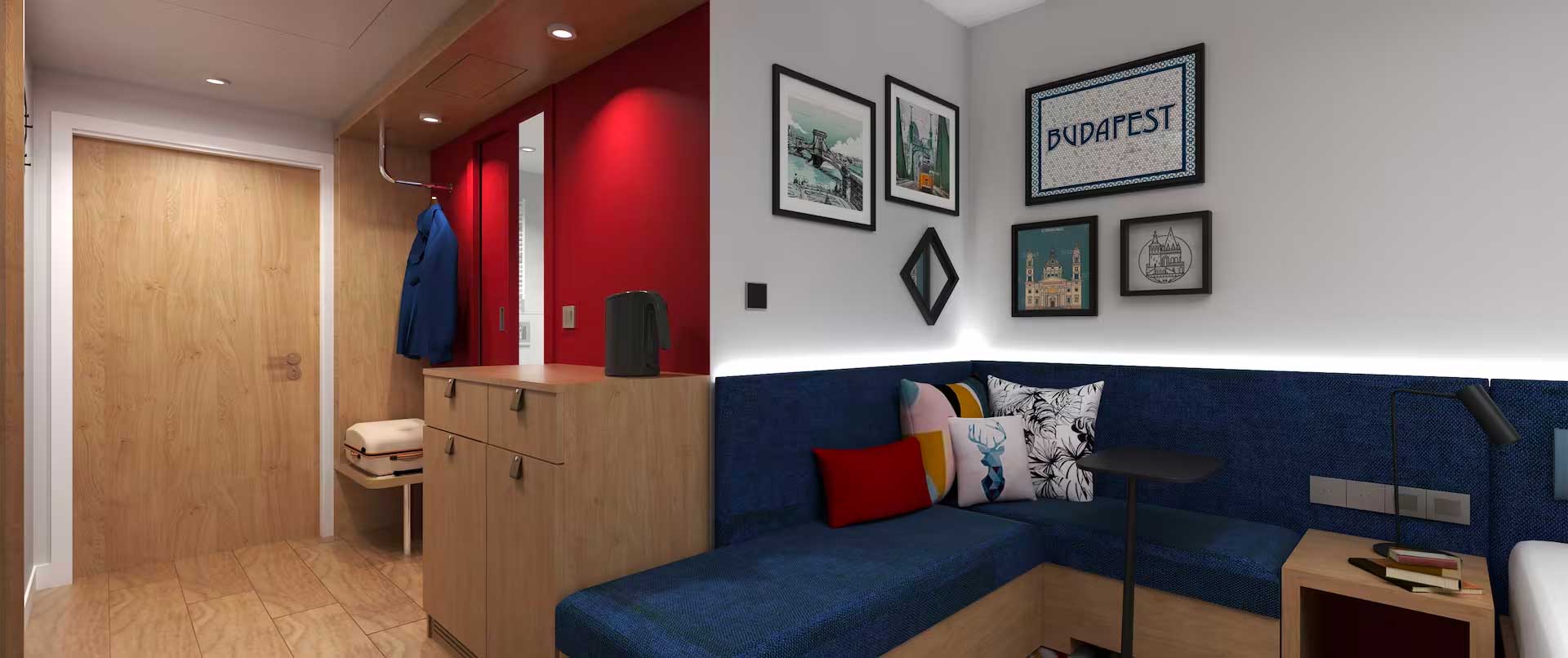
- Hampton by Hilton Budapest City Centre — Located in the city center a short distance from Liberty Square and St. Stephen’s Basilica, the Hampton Inn advertises accessible queen rooms with a roll-in shower.
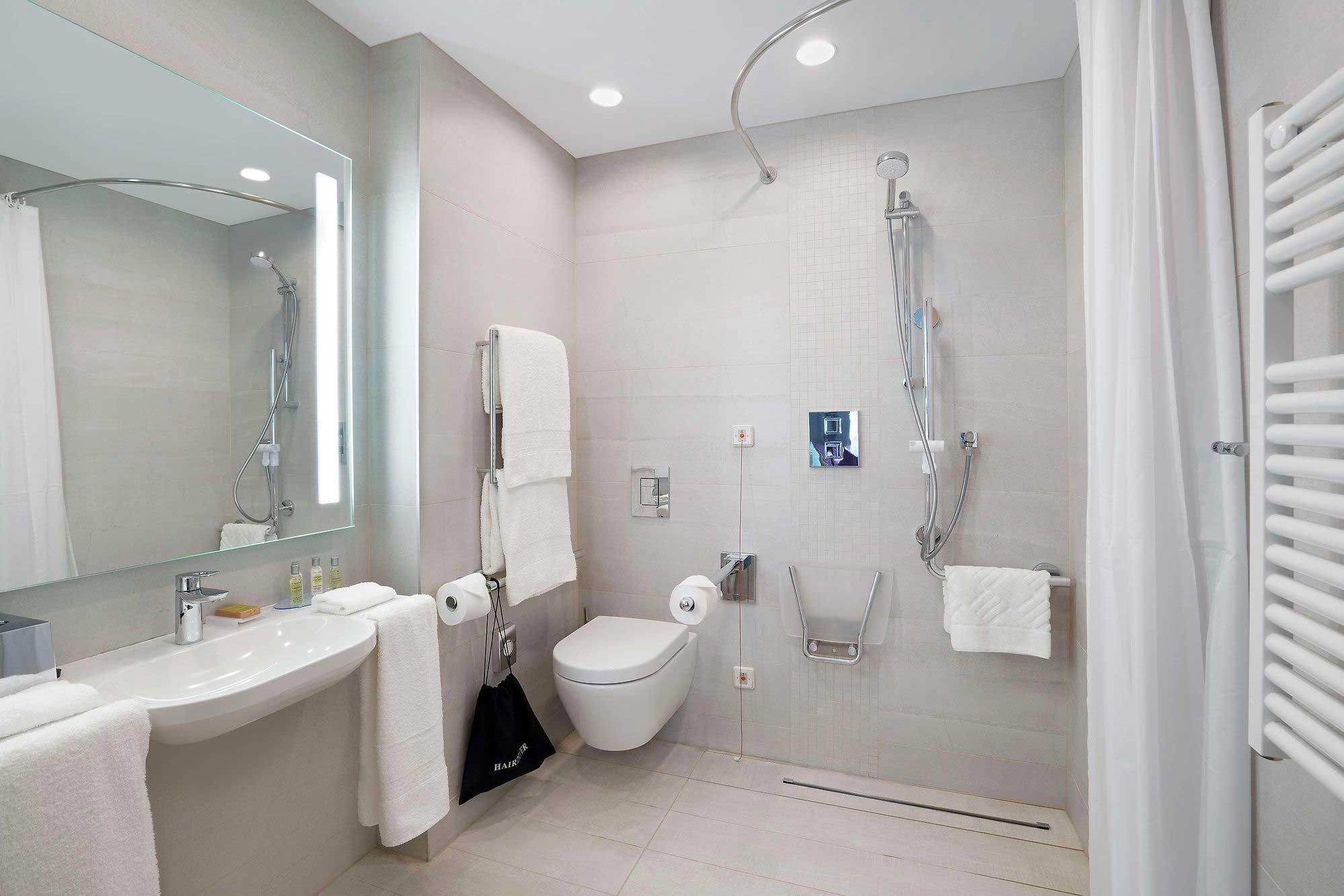
- Hilton Garden Inn Budapest City Centre — Located near the Hungarian Opera and St. Stephen’s Basilica, the Hilton Garden Inn offers wonderful accessible rooms at the heart of the action.
Have we missed one? If you have visited Budapest and have a hotel that you would recommend to travelers with disabilities, please share your experience in the comments below!

